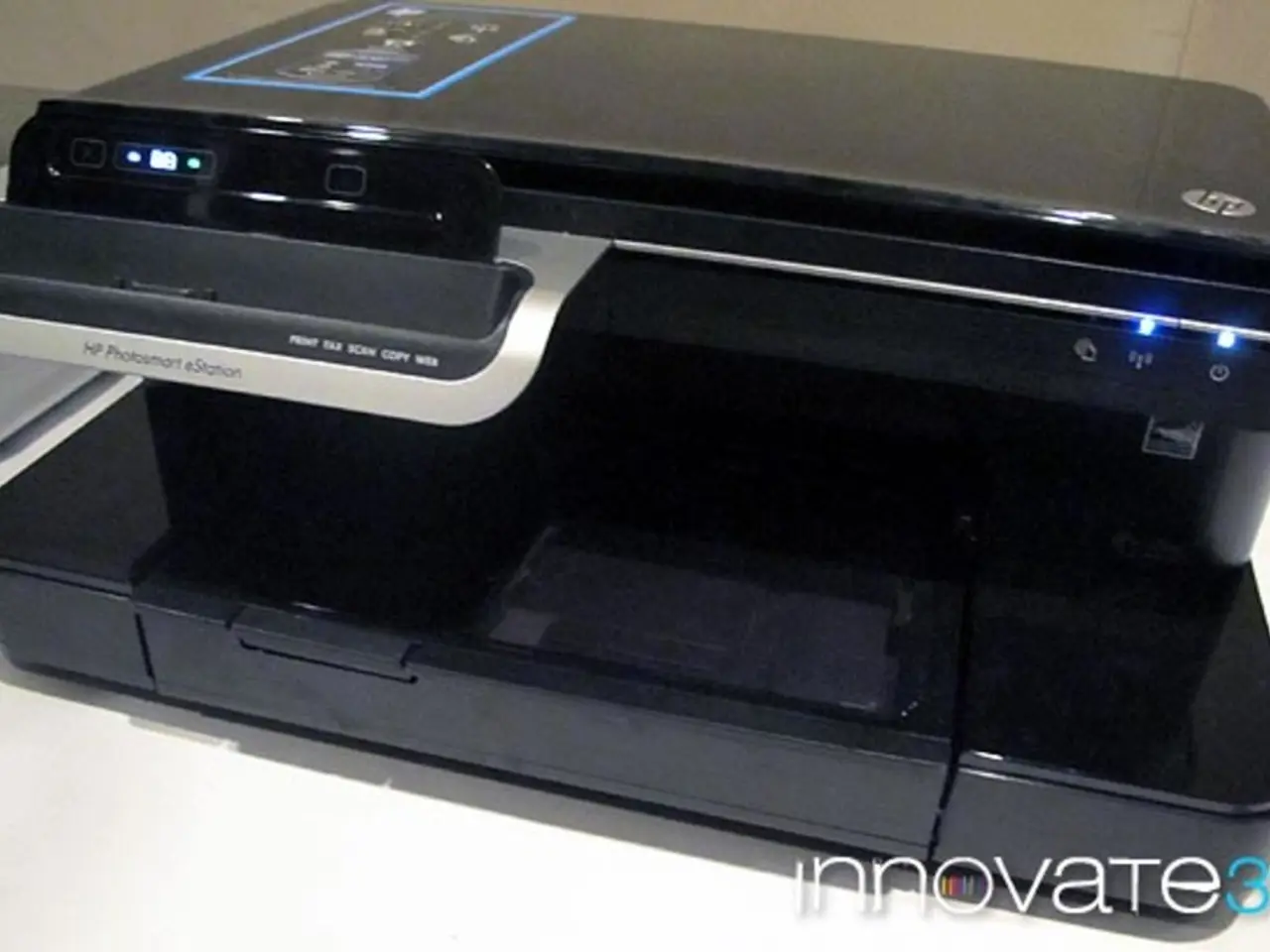Disregarding printer security invites you to potentially fall victim to cyber attacks
In the digital age, modern printers, particularly networked multifunction devices, have become frequent targets for cyberattacks due to their connectivity and the sensitive data they handle. These devices, often overlooked as security risks, can pose significant vulnerabilities if not properly managed.
Key risks include authentication bypass and the use of default credentials, unpatched firmware and software, network vulnerabilities, data interception, hard drive exposure, malware and firmware attacks, and physical access vulnerabilities.
For instance, vulnerabilities such as those recently discovered in Brother and other manufacturers allow attackers to bypass authentication by exploiting default or easily guessable administrator passwords. This can lead to unauthorized access and control of the device and potentially the broader network.
To mitigate these risks, organisations should adopt a proactive, lifecycle approach to printer security. This includes selecting devices from vendors with strong security track records, changing default passwords immediately, configuring device settings to enforce strong authentication, applying firmware and software updates promptly, conducting regular security audits, and ensuring secure erasure or physical destruction of hard drives during decommissioning.
Additional best practices include educating employees on print security risks, leveraging managed print services, isolating printers on separate network segments, using encryption to protect data, and maintaining ongoing vendor communication.
A recent study by HP Wolf Security found that businesses often neglect printer security, with only 36% of IT and security decision-makers applying printer firmware updates promptly. This negligence can have serious consequences, as compromised printers can harvest confidential information for extortion or sale.
By considering security at each stage of a printer's lifecycle, organisations can improve the security and resilience of their endpoint infrastructure, as well as benefit from better reliability, performance, and cost-efficiency over the lifetime of their fleets. This, according to Boris Balacheff, chief technologist for security research and innovation at HP.
Steve Inch, global senior print security strategist at HP, emphasises that printers are no longer just office fixtures, but smart, connected devices storing sensitive data. Therefore, it is crucial for businesses to prioritise printer security to protect their data and maintain their digital security posture.
- Recognizing the significance of cybersecurity in business operations, it's essential to address the vulnerabilities in networked multifunction printers, considering them as data-and-cloud-computing infrastructure.
- Neglecting printer security can lead to severe consequences, such as compromise of the devices, interception of confidential information, and potential extortion or data sale, highlighting the need for proactive measures.
- To secure printers, organizations can adopt best practices like choosing vendors with strong security histories, changing default passwords, enforcing strong authentication, applying updates promptly, and conducting regular audits, among others.
- By adopting a lifecycle approach to printer security and considering security at each stage, businesses can not only improve the security of their endpoint infrastructure but also ensure better reliability, performance, and cost-efficiency over the lifespan of their printer fleets, as advocated by experts like Boris Balacheff and Steve Inch.




